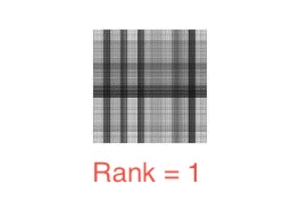My research interests are in nonlinear optimization for machine learning. Below are some of the projects that I have been involved with my collaborators in industry and academia.
Optimization tools
- McTorch. Currently working on the Python toolbox McTorch, a manifold optimization library for deep learning.
- Manopt. I am also involved in the development and promotion of the Matlab toolbox Manopt for optimization on manifolds.
- Pymanopt. Joined Pymanopt team as a maintainer.
- Microsoft GitHub Reommenders. Contributed manifold-based algorithms.
- Microsoft InterpretML. Contributed the SPOTgreedy algorithm.
ML in product research
- Copilots and prompts [Microsoft]. Worked on Microsoft Copilots and related prompt tuning.
- Homoglyph detection [Microsoft]. Created a pipeline for homoglyph detection and classification. The prototype service has since become a full fledged engineering effort.
- Auto-tagging at scale [Microsoft]. Worked with the SharePoint India team to explore ML techniques for auto-tagging of SharePoint documents. On the research side, we looked at how to exploit the rich taxonomy structure of the tags.
- Grouping of Exchange commands [Microsoft]. Worked with the Exchange India team on understanding the usage of Exchange commands and whether it makes sense to identify groups of commands frequently used together.
- Kaizala [Microsoft]. Worked with multiple teams to integrate data-driven intelligent features into the Kaizala and Office Lens apps. The use cases that we tackled revolve around improving user experience on the apps by leveraging the latest machine learning tools. An overview and a short video on the current focus of our team. Recently, we have pushed a couple of features to Kaizala app for internal dogfooding (now available in Kaizala beta). This video shows on-device implementation of semantic search on the Kaizala app. The implementation has low-latency and search happens with every word being typed.
- Multilingual embedding [Microsoft]. The aim was to generate vector embeddings for words in the target language that are learned from a small set of dictionary mappings between the source and target languages. The use cases included being able to leverage tools developed in the English language to solve similar problems in a different language with little training data.
- Product recommendation [Microsoft]. Worked on developing algorithms for an external Microsoft customer to enable ML driven product recommendations. We contributed the RLRMC and GeoIMC algorithms to the official Microsoft Recommenders GitHub repository.
- Competitive pricing of products [Amazon.com]. Worked on the estimation of the competitive prices of 3p unique products, i.e., Amazon is not a retail player for these products. The large-scale nature of the project demanded to work on simple algorithmic implementations that are scalable and simple to maintain. The proposed models were productionized and used to generate price estimates worldwide for all of the Amazon marketplaces and consumed by multiple customers. (Patent filed.)
- Style recommendation for fashion [Amazon.com]. Worked on cold-start product recommendation by exploiting user and product attributes. Our algorithms have been pushed to internal customers. The online results have shown significant lift of performance over other baselines. The proposed algorithms are in production. Refer to the paper here.
- Detecting anomalies in e-commerce [Amazon.com]. We exploit the problem structure to propose natural gradient learning algorithms for tensor decomposition. The proposed algorithm is in production to detect anomalies in seller and reviewer activities.
- Demand forecasting [Amazon.com]. As supervisor of an internship project, we proposed low-rank tensor factorization prototype models for demand forecasting problems.
Academic Research Interests
- Optimization on manifolds. Understanding the (Riemannian) geometry of structured constraints is of particular interest in machine learning. Conceptually, it allows translating a constrained optimization problem into an unconstrained optimization problem on a nonlinear search space (manifold). Building upon this point of view, one research interest is to exploit manifold geometry in nonlinear optimization.
We have been actively involved in both matrix and tensor applications. We have also worked on domain adaptation mostly on ML side. - Geometry-aware cross-lingual word embeddings and related applications. Recently, we have been looking into generating multilingual embeddings, in both supervised and unsupervised ways.
- Optimal transport with applications.
- Decentralized and stochastic optimization algorithms. We explore recent advances in stochastic gradient algorithms on manifolds.
- Deep learning. We study geometric algorithms for modern deep networks that are robust to invariances of the parameters. On a conceptual level, our interest is to understand the link between learning a “complex architecture with simple algorithms” and learning a “simple architecture with sophisticated algorithms”.


